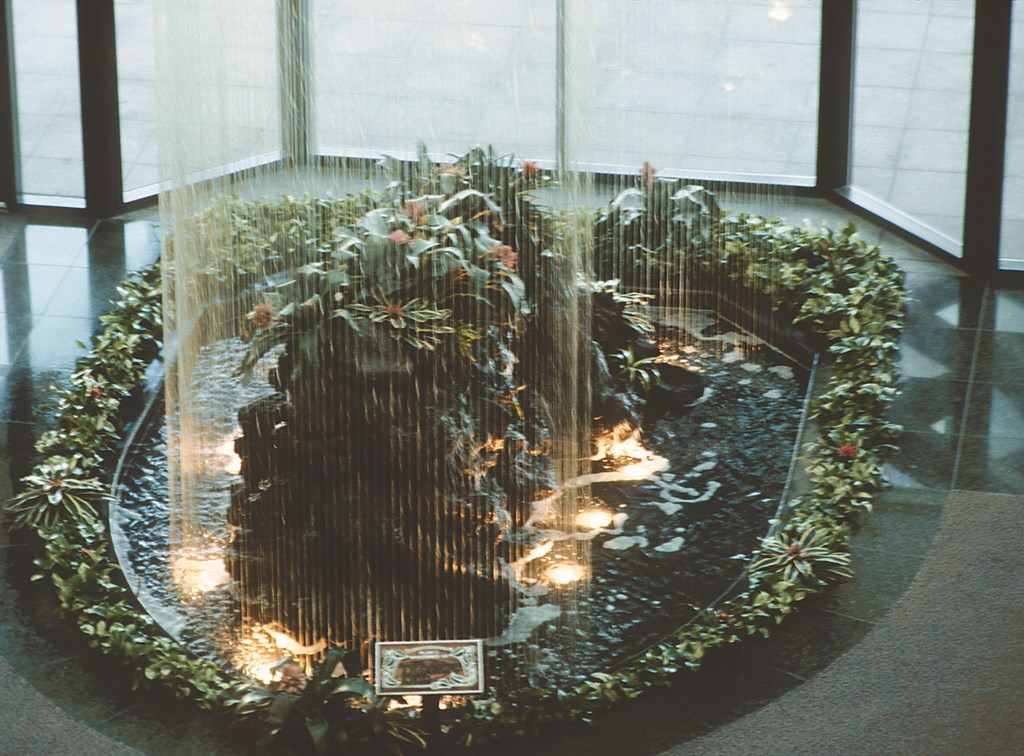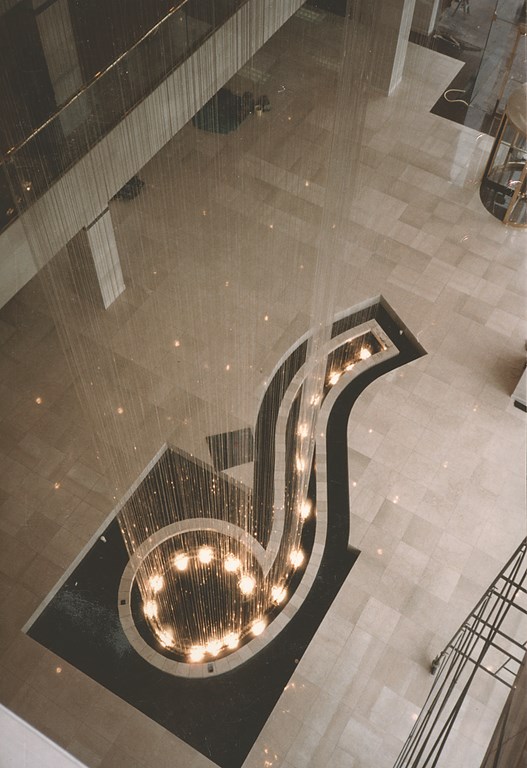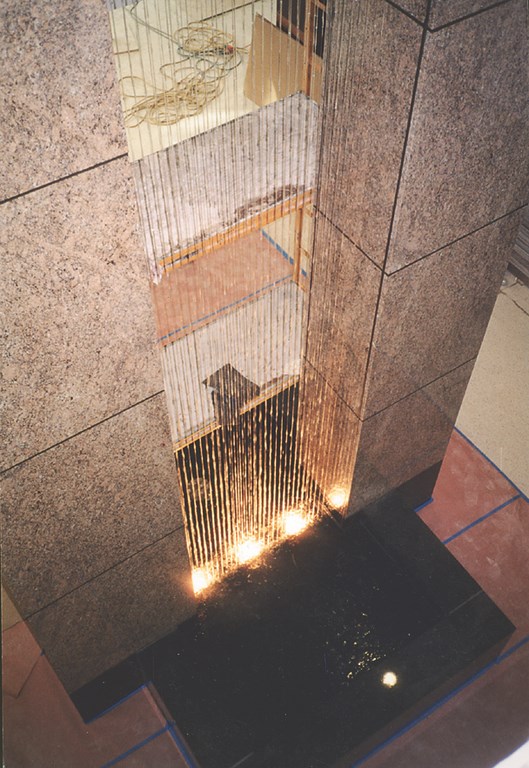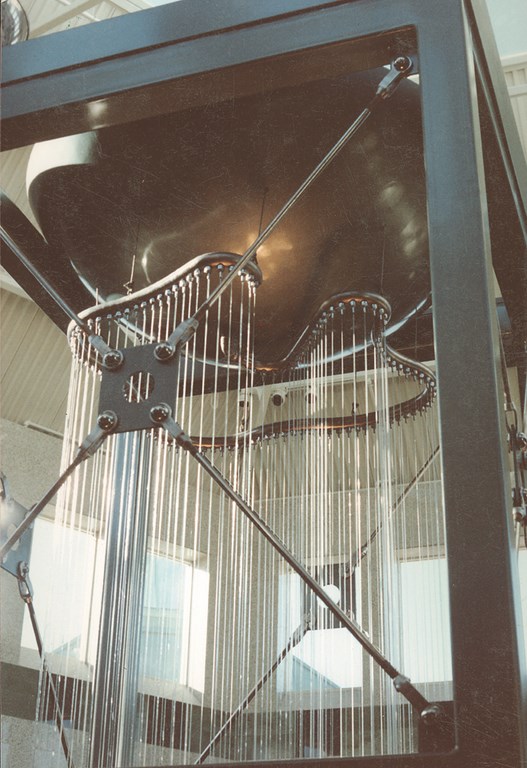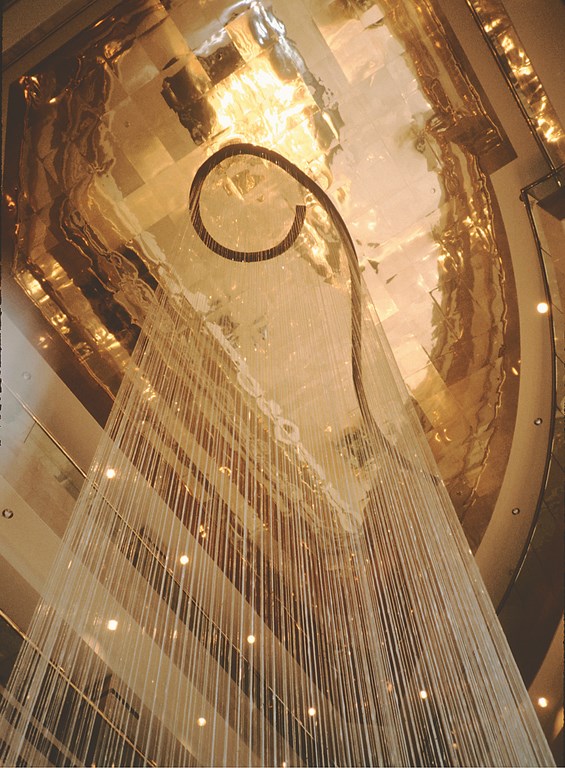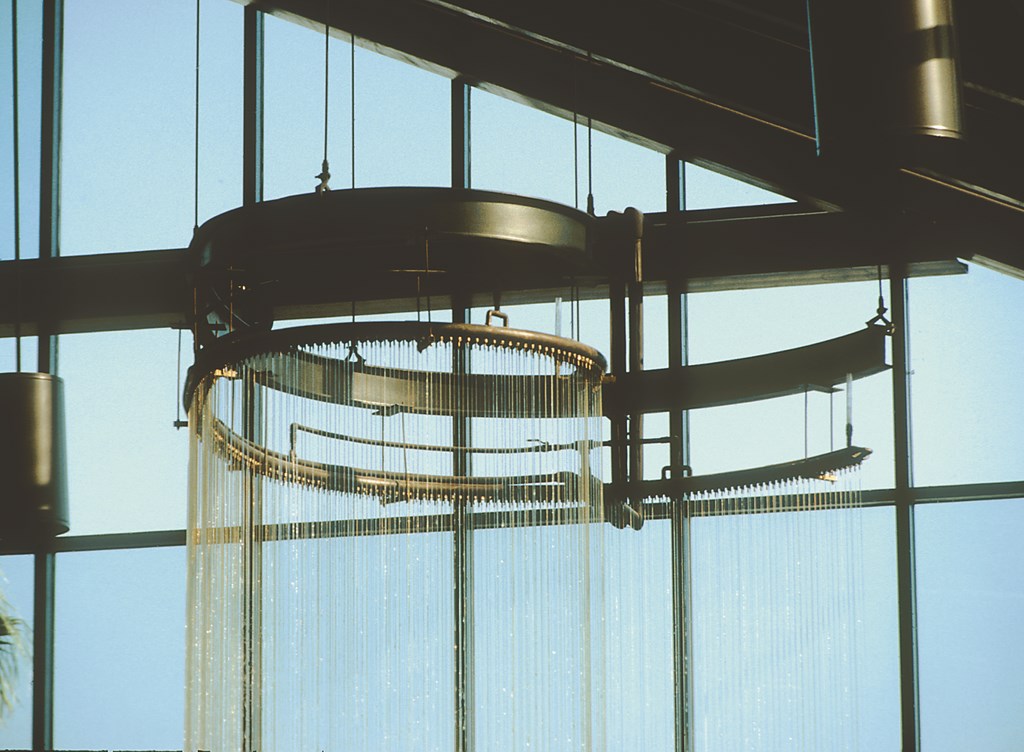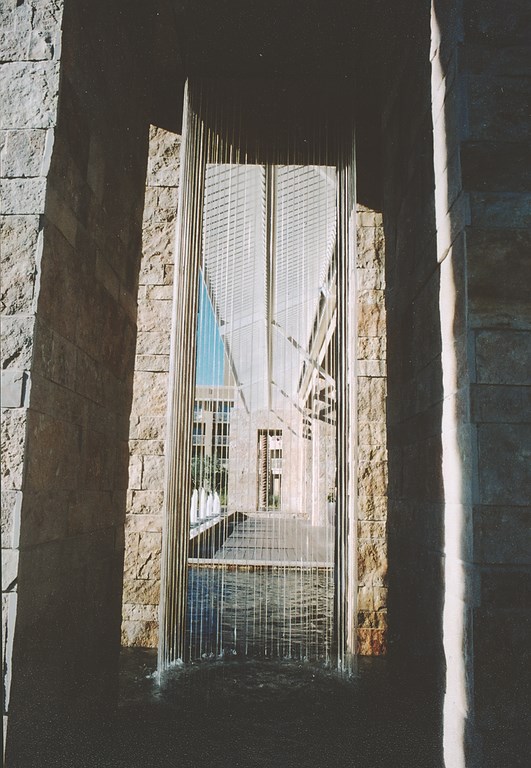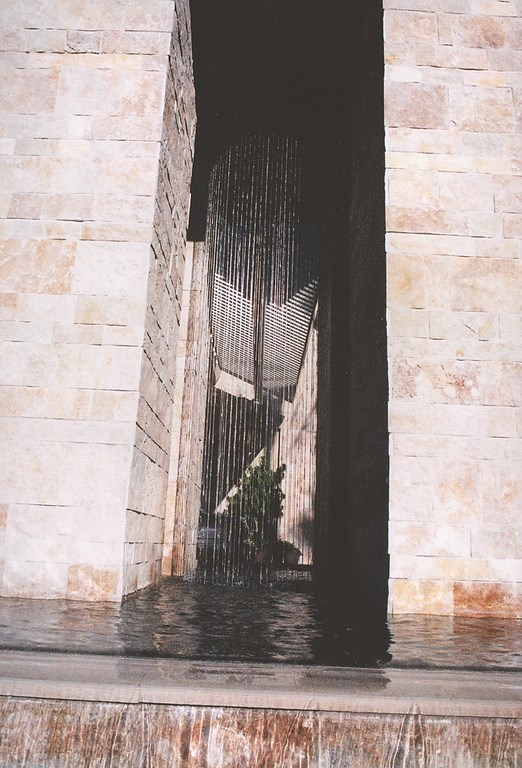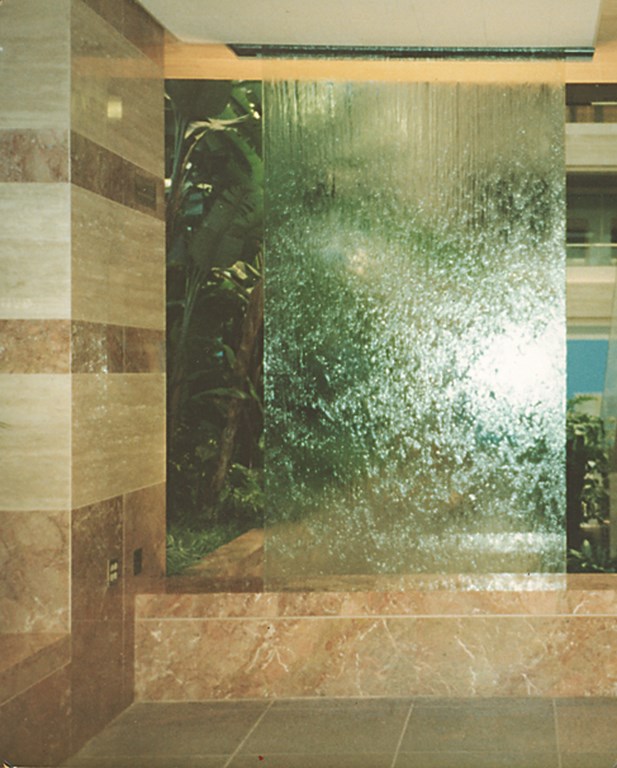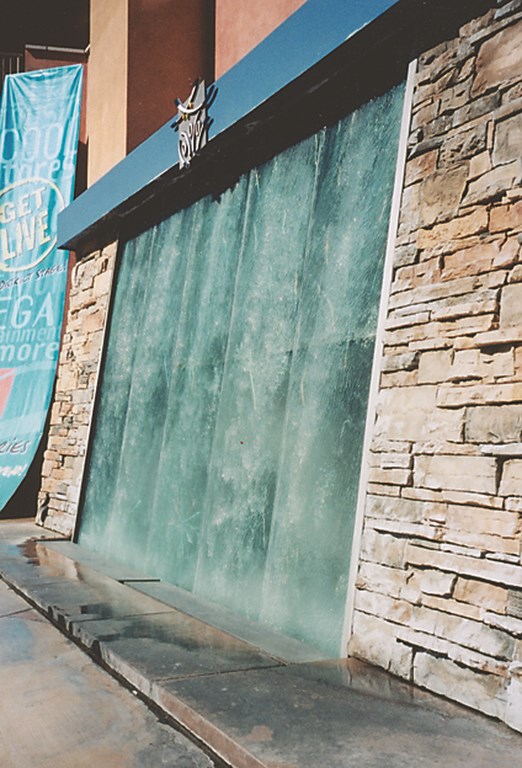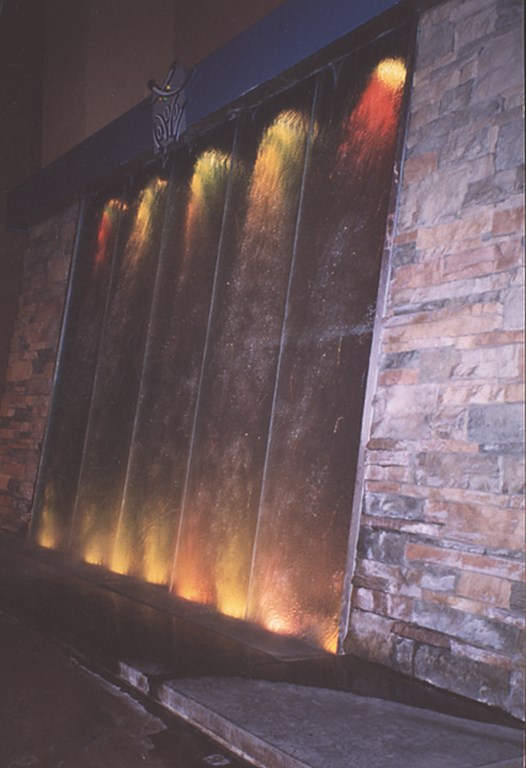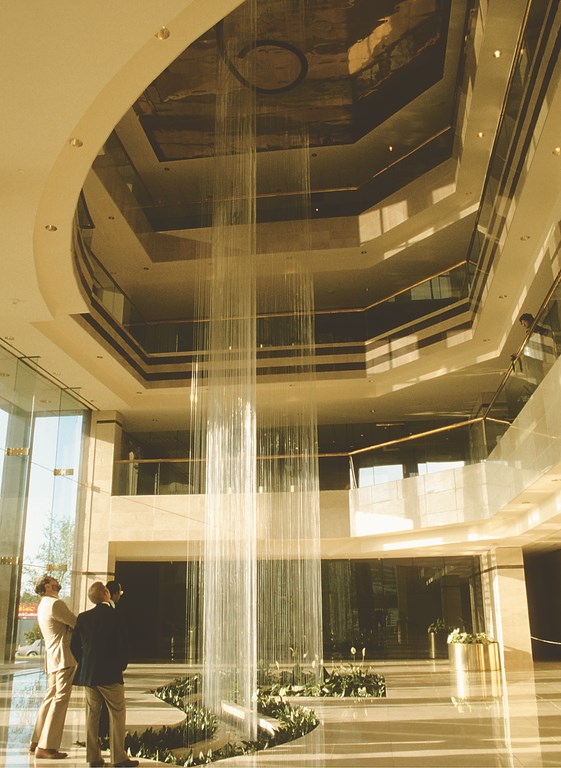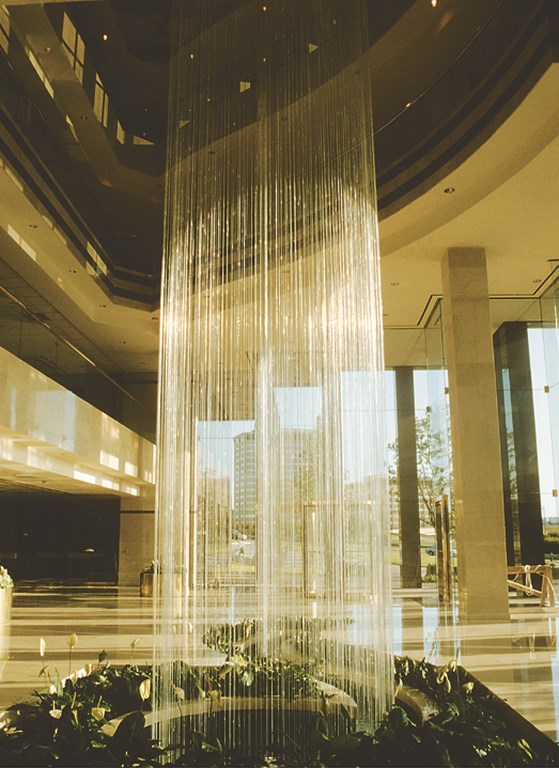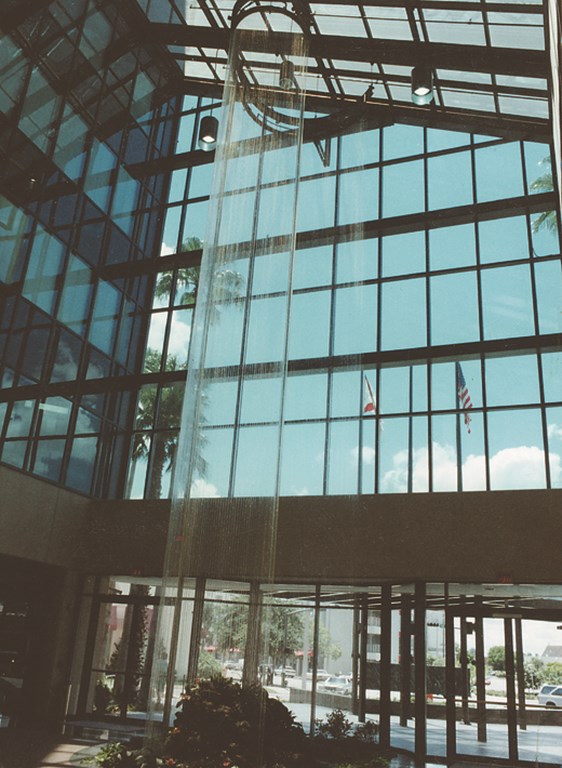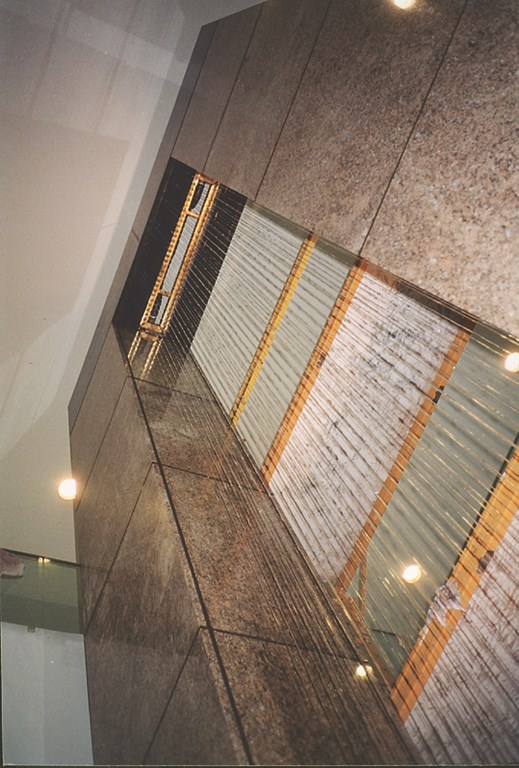Shaping the Rain
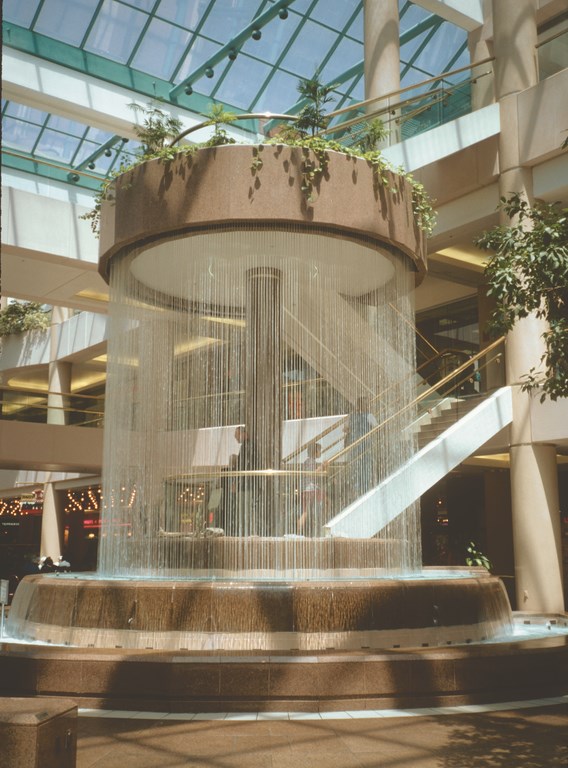
For many of us in the watershaping business, the design and creation of fountains and water displays follows a predictable set of functional patterns. Given the traditional tools of the trade and our repertoire of nozzles and spray apparatus, for example, we tend to fashion effects and shapes from the ground up, literally throwing water in the air in a more or less uncontrolled manner.
From a design standpoint, the problem with this tradition is that it eats up space like nobody’s business: The pools needed to catch free-falling flows of any noteworthy height need to be large enough to capture water subject to the effects of splash, wind drift and overspray. The higher the spray, the larger must be the footprint of the pool to contain it adequately.
As a rule, these pools need to have diameters of twice the height of the spray – by any measure a significant contribution of expensive commercial real estate to the creative effort at a time when property owners are motivated to make every available square foot an income producer.
As an alternative in this space race, watershapers have found dry-deck or curbless fountains to be a great way to bring water effects into smaller settings with footprints that can serve multiple purposes. Another option that bears consideration is the rain curtain – a great addition to the watershaper’s creative arsenal and a system that flows from the top down rather than from the ground up.
FOOT PRINTING
Rain curtains are a unique manipulation of water based on the ancient Asian practice of capturing falling rainwater by using surface tension to run the water down chains, ropes and bamboo slits into small collecting pools, holding vessels or cisterns below.
Beyond being a great and convenient way for moving water from an uncontrolled to a controlled state, perhaps the greatest asset of the rain-curtain effect is the minimal amount of space it takes up on a floor. Indeed, the traditional rules of sizing fountain pools in proportion to spray height do not apply here: Curtains in excess of 50 feet tall can be contained within a pool six feet wide or even less, leaving much more floor space available to generate revenue.
| SMALL FOOTPRINTS: Although they can attain spectacular heights, the physical spaces required to contain rain curtains can actually be quite small – a fact that makes them a welcome design option in commercial spaces where every square foot is precious. |
In today’s commercial-property markets, having this option available can be invaluable. In just a small space, rain curtains offer all the aesthetic and psychological benefits of water in motion, increase pedestrian and tenant interest, establish a facility’s visual identity and lend the property a competitive edge that space constraints might not otherwise permit.
Rain curtains are particularly striking where ceiling heights are substantial – as in the entryways of most office buildings and a great many hotel/resort lobbies, shopping malls and open stairwells. They are also best suited to indoor applications, where wind currents aren’t able to distort the delicate effect.
| SCULPTURAL SENSE: The fact that rain-curtain manifolds can be fabricated into just about any imaginable shape with just about any sort of support structure can make them a compelling, contemporary design accent all on their own – all ready for enhancement by a sly trickle of water. |
That delicacy is conjured with a range of products and hardware starting with the material along which the water flows. This can be laced or stranded nylon or Mylar – the former a heavy-gauge monofilament “fishing line,” the latter a thin, flat “shoelace” material. As the water flows onto the material, surface tension forms it into beads that appear to travel – as if in slow motion as a result of friction – down the length of the material to the collection pool below.
The key to the effect is introducing the water onto the material in a controlled manner. This requires a precision distribution manifold, usually fabricated of brass or stainless steel tube or pipe and outfitted with a series of emitter nozzles (also in brass or stainless steel) fitted with grippers that hold onto the strands. Emitter precision is of paramount importance: The orifice controls the amount of water flowing onto the strand while “guiding” it into position.
DOWN BELOW
The other critical component of the distribution system is the counterweight attached to the pool end of the strand. It must be heavy enough to pull the strand taut and keep it from moving and possibly twisting or tangling with its neighbors; at the same time, it can’t be so massive that it puts a strain on either the strand itself or on the grippers in the manifold.
| OUTDOORS, TOO: Although outdoor applications for rain curtains are less common than are indoor installations, they can be used with wonderful results under the right conditions – as in this sheltered entryway, where the short rain curtain lends a sense of motion and sound to its setting. |
Typically, these tensioning weights are tied or fastened together in series after installation and strand adjustment to keep the strands from becoming twisted. The emitters themselves are generally spaced on 1 to 1-1/2-inch centers: Any closer and static electricity will make the strands tend to stick together when they’re dry, while surface tension will impart the same clumping urge when they’re wet.
Beyond those basic performance requirements, rain curtains are a model of flexibility: Heights, shapes and spans are limited only by available space, while the manifolds can take on virtually any geometry, from circles, arcs or ovals to squares, rectangles, crosses, tees or triangles. Multiple manifolds can be used as well, and emitter placements can be staggered to add depth and dimension to the curtain effect. In addition, strand angles can be set up to 20 degrees off the vertical before gravity overcomes surface tension and the water beads will begin dropping off the strands.
|
Variations on a Theme The use of nylon or Mylar line or lace to run water from the top to the bottom of a water curtain is just one option available to watershapers working in tight spaces. Other options include panes or sheets of glass, acrylic or plexiglass, either smooth or textured, to handle the water flow from top-mounted emitters.
As water flows down these sheets, the influences of surface tension and friction tend to cause the water to gather or “scallop” on its way to the collection pool. Combined with submersible lighting (placed to backlight the sheet), the design possibilities are limited only by the watershaper’s imagination. — J.M. |
Modern strand emitters are also more efficient than were those available in the past. In fact, there were so many problems with early emitters that the first rain curtains were set up to use glycerin, a sweet, syrupy hygroscopic tri-hydroxy alcohol used as a solvent and plasticizer, as the liquid medium in motion.
This high-viscosity material flowed more slowly than water and had the visual advantage of forming larger droplets, but it also had a nasty tendency to stain surrounding surfaces, was slightly toxic and had mild corrosive properties. Furthermore, liquid traveling through the atmosphere is something of a magnet for airborne particles, and glycerin tended to become a sticky mess after a while as well as a maintenance headache.
Pure, clean water poses none of these drawbacks and has therefore claimed its rightful place as the medium of choice for rain curtains. The main treatment necessity is a high-quality filtration system, which helps by minimizing the risk of clogging the emitters and preventing hit-or-miss operation of the rain curtain.
The actual water flow is relatively slight, depending upon the number of strands. The rule of thumb is allowance of a flow rate of 0.33 gallons per minute per strand via an appropriately sized pump and filter – thus, a rain curtain with 100 strands will require a flow rate of 33 gpm. The height of the rain curtain (that is, the length of the strands) does not change the flow requirement, although it does increase the total volume of water in the system.
GOING WITH THE FLOW
The sight of water flowing down a rain curtain is remarkably compelling on its own, but the effect can be enhanced still further through use of submersible fountain lighting aimed up from the collection pool.
The light reflects off the water beads and wet strand material to create a shimmering effect and multiplies the observer’s ability to enjoy the kinetics of the watershape. A combination of spot and flood lights spaced at three-foot intervals works best in most applications, with the mix and wattage depending upon the height of the curtain.
| SUBLIME ELEGANCE: There’s a definite visual appeal to rain curtains of all heights, shapes and configurations – a different sort of drama from that of a bottom-up fountain, but certainly a source of pleasing sounds and an arresting sense of motion. |
Beyond aesthetics and installation, of course, operation and maintenance are important to the impression the system makes, particularly with its owners. The usual rules apply: Before start-up, the pool must be clean and filled with fresh water, with all pipelines flushed clean of any construction debris. Water quality needs to be monitored and managed to maintain that cleanliness.
The main challenge to rain-curtain systems comes in the form of hard-water scaling that can take its toll on emitters and strands over time. As a result, mineral de-scaling devices may need to be incorporated into the system or, in extreme cases, water softeners or reverse-osmosis purifiers. To promote long strand life, the use of sanitizing chemicals should be avoided; instead, ozone or ultra-violet light systems should be used.
Modern technology and precision fabrication have made an ancient and eminently practical design idea accessible in today’s design marketplace and allow the designer to bring a strikingly contemporary feel to any setting. The greatest post-installation pleasure comes in watching visitors as they experience the grace and beauty of the effect from vantage points just a few feet removed from the effect – a reaction appreciated by watershapers and property owners alike.
Jon Mitovich is president and general manager of Roman Fountains, a designer and manufacturer of fountain-system packages and components based in Albuquerque, N.M. He graduated in 1976 from Southern Methodist University’s Cox School of Business in Dallas and has participated in seminars on fountain and pool design at UCLA and Harvard’s Graduate School of Design. Mitovich is a member of the American Society of Landscape Architects, the Construction Specifications Institute and the National Spa & Pool Institute. He has conducted classes and seminars on the fountain business and fountain design for various ASLA and NSPI chapters to help watershapers understand the origin, history and application of water in architectural environments. He also has written for a variety of trade publications, including WaterShapes.











